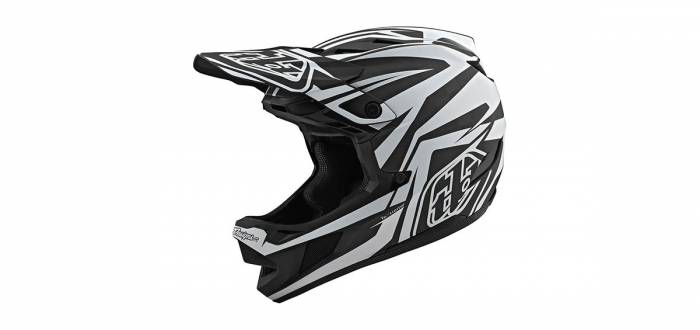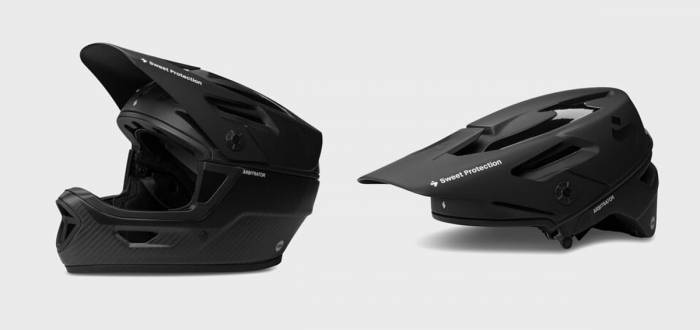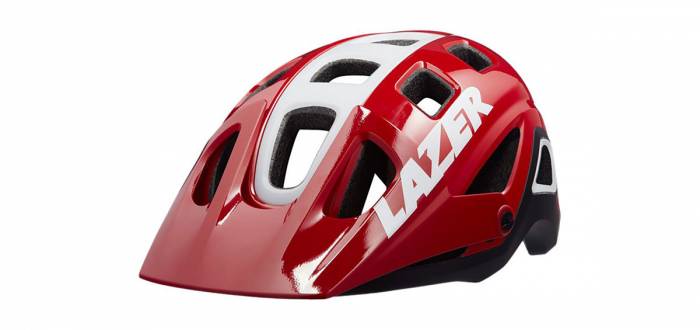Products You May Like
After countless rowdy test days, here are the best mountain bike helmets for all types of rides, from casual singletrack spins to enduro pursuits.
On a good day in the saddle, you won’t notice your helmet at all. But when an unlikely disaster occurs, a helmet can prevent serious injury or fatality.
To determine the best mountain bike helmets of 2020, our gear testers rode variable trails and conditions across the Rocky Mountains. Our team of men and women included professional, competitive, and recreational mountain bikers in Colorado and Utah. Their specialties range from dirt jumping and enduro events to endurance all-mountain, multiday, and avid weekly excursions.
Throughout each ride, we meticulously examined each helmet’s characteristics from ergonomics to safety, customization features, accessory integration, and durability. And while there isn’t a single helmet that works for every rider, we’ve categorized our picks to help you find a perfect fit.
The Best Mountain Bike Helmets of 2020
Best Overall: Bontrager Blaze WaveCel Mountain Bike Helmet ($300)
The Blaze is a top performer for safety and comfort. The design uses WaveCel, an exclusive interior honeycomb-like structure that crumples and glides to absorb impact and rotational energy. The technology is an alternative to MIPS liners.
WaveCel is five times more effective at head protection than traditional foam helmets in a cycling accident, according to a study completed by the Legacy Research Institute. While there has been some controversy around that study, it’s certainly proven itself effective.
Safety aside, it’s one of the most versatile, user-friendly, and comfortable helmets we tested.
The buckle is magnetic and easy to clip, which is especially great when you have gloves on. And the 13 vents allow for maximum airflow. We also like that the quick-adjustment Boa fit system easily altered the fit.
The helmet also includes an additional internal NoSweat pad, with a silicone liner that catches sweat before hitting the eyes. And the visor is adjustable and extends further than other helmets we’ve used.
One tester noted, “This helmet has great versatility with an integrated mount up top for a light or GoPro camera, which is huge for me. Plus, the GoPro mount doubles as a screwdriver to adjust the visor — a smart feature I really like.”
The magnetic mount system stayed in place and didn’t move at all during test rides. However, the included mount screw wasn’t tight enough, and we had issues with the GoPro tipping forward while riding. Instead, I swapped out the screw with one that came with my GoPro, and it worked great.
And as our editor noted during our Blaze WaveCel review, “If you damage the helmet in a fall within one year of purchase, Bontrager will replace it for free.”
Best Budget: Lazer Sport Chiru MIPS ($60)
The Chiru MIPS comes in at a lower price point but with high comfort and protection. The design has lower-skull coverage (the material extends behind and in front of the ears). And the interior head basket system, called Turnfit Plus, offers a 360-degree customizable and anchored fit. This is a great option if you often fall between helmet sizes.
Overall, we were impressed with the comfort and coverage. The Chiru weighs in at 335 g, is decked with a visor, and has 15 vents. The helmet is compatible with both glasses and goggles, although there’s no goggle resting spot as the visor does not have adjustment capabilities. And the helmet received a five-star safety rating from Virginia Tech Helmet Ratings during a third-party analysis.
Our tester confirmed, “The breathability is great with large vents that let the air flow well on long climbs — but not it’s not too much with cold temps. The helmet packs nicely into an Osprey Pack LidLock but is slightly asymmetrical due to the vent placements. Overall, for the price, this is a great helmet with an agreeable fit, without any real drawbacks in the performance.”
Best Full-Face Helmet: Troy Lee Designs D4 Carbon MIPS ($575)
The D4 Carbon MIPS is the best-fitting, most comfortable full-face helmet we’ve worn. It fits snugly without pressure and feels very light.
The helmet has 24 total vents: 10 front, five overhead, and seven rear. One downhill tester noted, “The vents kept my head cool during sunny, steep climbs, which is impressive for a full-face with this level of protection. I could sit for 10 minutes at the top of the climb without feeling overheated or claustrophobic.”
The D4 Carbon MIPS uses carbon fiber reinforcements, call TeXtreme Spread Tow, in the shell. The new material allowed for a 50g weight reduction without strength loss in the fourth-iteration helmet. This 1,000g full-face is the lightest carbon downhill helmet made by Troy Lee Designs.
Our tester did side-by-side ride comparisons and noted that the Fox Proframe Quo Helmet ($260) is a lighter 750 g but sacrifices protection. And the POC Coron Air Spin ($275) is heavier at 1,170 g.
The D4’s liner is adjustable and washable. The design provides a softer area at the center-lower base, called the collarbone impact system, in case the helmet slams the shoulder or collarbone. We also like that the quick-release cheek pads are antimicrobial, anatomically designed, and can easily be removed with the helmet on after a crash.
The chin strap has thick padding, so the straps themselves don’t dig in or irritate. Goggles fit great — and so do sunglasses. Overall, the construction is durable and fits the price tag. For shuttle rides or downhill and enduro racing, this helmet is a top pick.
Best Multiuse & Conversion: Sweet Protection Arbitrator MIPS ($300)
In a progressive design, the Arbitrator is a convertible full-face helmet that’s downhill-certified with a removable carbon fiber chin guard. The weight is 980 g (M/L), or 550 g when the face protection is removed.
The helmet includes two pad thickness choices for personal fit. The fit is adjustable for head height and circumference via the Occigrip turn dial, which testers found easy to use. Sunglasses and goggles work well with the helmet, including space to park goggles.
There are 16 vents in total. And the ventilation includes an airflow channel that cools the temporal artery without exposing the temples.
For a full-face, the ventilation is pretty good. We never overheated, and there’s enough airflow to ride comfortably. But this helmet is focused more on protection, so there’s not as much ventilation as the other non-full-face helmets.
The test rider said, “The adjustable visor is useless. At its lowest setting, it’s not blocking sunlight for me — I can’t even see it. It also doesn’t slide up very easily when I need to park my goggles. Also, the regular helmet is pretty dorky — it’s big and not very streamlined.”
Best Style: Smith Forefront 2 MIPS ($240)
The Forefront 2 uses Smith’s patented safety material called Koroyd: Side-by-side tubes — which look like straws — are welded together and crush uniformly upon impact.
The open-tube construction of the Koroyd, in addition to the 20 vents, also allows for airflow. Three vent portals in the helmet’s center offer complete ambient exposure. The 380g (M) helmet feels light on the head. And testers appreciated that it kept their heads cool.
“The fit is really comfortable too, with an easy dial-adjustment called VaporFit,” explained our test rider, who used the helmet on a range of desert and mountain rides from 8 to 15 miles long. The conditions were 60-70 degrees F with ample sunshine.
The helmet’s liner is antibacterial, and there’s a mountain point (accessory mount sold separately).
Anyone looking for a comfortable and stylish helmet should consider the Forefront 2.
Best Ventilation: Giro Radix MIPS ($95)
At only 315 g, the Radix MIPS has 25 vents and great breathability. It’s a great choice for summer riding and offers the ventilation you’d expect from a road helmet.
The adjustable visor offers three settings, including a high position for goggle stow. And the low-profile design feels good and accommodates a variety of hairstyles from braids to ponytails. Testers found size adjustment worked well, with no pressure points or bobblehead.
There’s a small-interval dial, so you can get a perfect fit. And the slide adjustments are also easy and intuitive.
Ultimately, this Giro helmet pairs well with sunglasses and goggles, feels lightweight but sturdy, and it hits the lower end of the price spectrum.
The Best of the Rest
Specialized Ambush MIPS SL with ANGi ($200)
The Ambush helmet weighs in at 309 g (size small) and has 20 vents, but what sets it apart is the high-tech connectivity.
The Ambush has a patented helmet-mounted ANGi (angular and G-force indicator) crash sensor. If a crash is detected, the device sends SMS and email notifications to specific contacts via the Specialized Ride app on iOS or Android.
When the sensor detects a crash, it will send a countdown alert to the rider’s phone that they can deactivate in up to 90 seconds. Otherwise, it will notify emergency contacts via SMS and email. The sensor also syncs with Strava and the Specialized Ride app to provide GPS-based activity tracking, which can be sent to the emergency contacts as well.
Our tester found the system really works. “It sent emails to my emergency contact at the start and end of my solo rides. And the sensor didn’t confuse banging up the helmet with a real crash,” said the tester, who dropped the helmet on top of packed pebbles and granite from 3, 5, and 7 feet high, and also expelled the helmet on a boulder while riding.
The helmet also has an exclusive, ultralight MIPS design, called the MIPS SL protection, integrated into the helmet pads. Furthermore, the helmet’s fit system — the Mindset 360 — offers 360-degree customization. An integrated dial alters the tension around the head, and five internal height positions are manually tailored inside the helmet.
Solo riders looking for peace of mind on the trail or anyone interested in top-tier safety features will appreciate the Ambush.
Lazer Sport Impala MIPS ($140)
The Impala MIPS has 22 vents and lower shell coverage with extended material in front of and behind the ears. The helmet, 335 g, includes an action camera (or light) mount that’s designed to not internally protrude upon impact.
The Impala MIPS checks a lot of important boxes. It feels pleasant to wear. The visor offers great eye protection against brush and branches. And its three-point adjustment system accommodates goggles to rest on the lip of the helmet.
A protective coating on the bottom edge of the shell prevents deterioration of the helmet foam. And internal size customization, called the Advanced Turnfit System, enables a 360-degree and vertical fit adjustment.
All in all, this is a great helmet. It’s a solid pick if you’re looking to spend more than the budget Chiru ($60) but less than $200.
POC Tectal Race Spin ($220)
The Tectal Race Spin helmet has a stylish, polished, and streamlined design. Plus, the inside is cushy, and the shell feels light but robust.
The shell includes structural reinforcements, called Aramid bridge technology, that increase sturdiness. And a dial fit system allows for quick size customization. For rotational impact protection, the helmet uses SPIN (shearing pad inside) pads, a patent-pending technology integrated into the helmet.
The optimally placed SPIN pads are made with a silicone gel-like membrane, which allows the helmet to “spin” on impact. The design is 368 g (M/L) and has 17 vents, which our tester found kept him cool on long rides.
The helmet has a goggle clip in the back. And the visor is adjustable, but it’s not easy to adjust on the fly because it needs to be tightened down. For additional safety, the helmet has a RECCO reflector, which allows rescuers to quickly locate an injured person in the helmet.
Buyer’s Guide: How to Choose a Mountain Bike Helmet
Prioritize Fit
For a proper fit, the helmet rim should rest one to two finger widths above the eyebrow, according to Virginia Tech researchers. During use, tighten your helmet down and make sure that helmet movement is minimal.
“The helmet should sit comfortably and correctly on the head without being too tight or causing any hot spots or pressure points. You’ll want to ensure it does not move when you shake your head. You can always use the micro-adjustment features like any dial-a-fit system or strap adjustments to fine-tune the fit,” said Casey Garrity, North America marketing manager for Sweet Protection.
Utility, Breathability
In addition to fit, determine the primary application of your helmet, like cross-country, casual rides, downhill, or enduro.
“I base my helmet choice on the following factors, in this order: application, MIPS, comfort, style, and breathability,” said one of our testers, an expert enduro racer. Another tester, a competitive cross-country, enduro, and IRONMAN rider, agreed, saying, “Fit, comfort, and utility are my main considerations.”
Look for a helmet that fits well and is breathable. Compatibility with glasses is also an important feature, as this can be a source of headaches while riding.

Weight, Safety, Style
Furthermore, examine how much a helmet weighs. “Sweet Protection builds helmets on three principles: light weight, low volume, and providing world-class impact protection. It needs to be lightweight, as we do not want to add any more mass to a head in a crash or impact. More mass translates to increased impact forces and speeds,” explained Garrity.
Increased protection usually costs more due to additional construction, but the dollars could save you in an unplanned accident.
Lastly, be honest about style. If you don’t like how it looks in the mirror, you’re less likely to wear it.
What Is Rotational Motion Impact Reduction?
“Rotational motion impact reduction technologies, in short, are materials used as a ‘lubricant’ between the head and the helmet to reduce injuries resulting from angular impacts. When implemented in a helmet, they are designed to reduce rotational forces by absorbing and redirecting rotational energies and forces transferred to the brain,” said Garrity.
One of the most common technologies is made by MIPS (multidirectional impact protection system), which has developed the technology for more than two decades.
Regardless, bikers can check if a helmet’s rotational motion impact reduction technology has been certified through testing and third-party certification.
Lifespan & Recycle Options
Keep track of your helmet’s age. Over time, exposure to environmental factors will diminish the life of the helmet from sunlight to extreme cold, moisture, and sweat. Also, repeated small impacts, such as dropping the helmet at the trailhead or tumbling around the back of the rig on the commute home, contribute to reducing the helmet’s life expectancy.
Right now, there are no special programs for recycling helmets. The former Snow Sports Recycling Program (SSRP), operated by Snowsports Industries of America, closed in 2015 due to revenue.
If you need to retire a helmet, it’s one gear item that can’t be safely donated. Instead, you can check with your helmet manufacturer to see if they will properly dispose of the helmet for you.
Or check your helmet for the common recycling symbol and the number associated with it. And contact your local waste management authority to see if they can take it for recycling. Certain cities and communities are capable of recycling helmets.
Have a favorite mountain bike helmet we missed? Let us know in the comments for future updates to this article.













